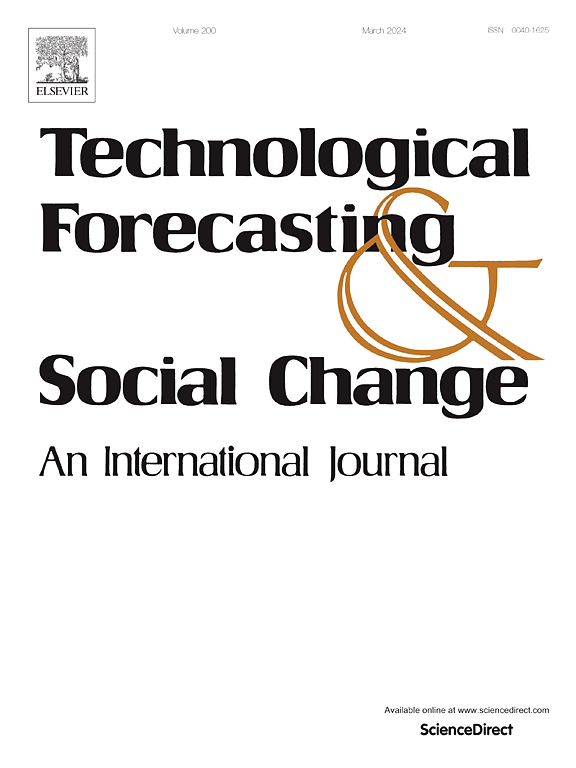Harnessing the dimensions of supply chain collaboration to promote innovation and flexibility in buyer-supplier relationships: Insights from fsQCA and NCA
IF 13.3
1区 管理学
Q1 BUSINESS
Technological Forecasting and Social Change
Pub Date : 2025-09-27
DOI:10.1016/j.techfore.2025.124363
引用次数: 0
Abstract
While the symmetric effects of supply chain collaboration (SCC) on innovation and flexibility from a probabilistic sufficiency perspective are well documented, prior research on the asymmetric effects of the dimensions of SCC on innovation and flexibility from a deterministic sufficiency perspective is scarce. However, understanding how the dimensions asymmetrically relate to innovation and flexibility can help uncover the SCC dimensions that are individually necessary (deterministic necessity perspective) and jointly sufficient (deterministic sufficiency perspective) for innovation and flexibility. Accordingly, we assume a deterministic perspective (i.e., deterministic sufficiency and necessity) to investigate the asymmetric effects of the dimensions of SCC on innovation and flexibility by unravelling the (a) dimensions of SCC that are necessary for innovation and flexibility and (b) combinations of SCC dimensions that enhance innovation and flexibility among supply chain partners in Ghana's downstream petroleum sector. With a sample of 166 firms, we used fuzzy set qualitative comparative analysis (fsQCA) to unearth the causal, complex, but sufficient configurations of SCC dimensions that drive innovation and flexibility. Necessary Condition Analysis (NCA) was also employed to ascertain the necessity (both in kind and degree) of each SCC dimension for innovation and flexibility. Whereas our fsQCA analysis reveals four pathways, each with different configurations for flexibility and innovation, NCA results suggest that all SCC dimensions are necessary for innovation and flexibility, albeit at different levels. Accordingly, we highlight the importance of complementing two asymmetric analysis approaches to provide nuanced insights into how SCC dimensions drive innovation and flexibility.
利用供应链协作的维度促进买方-供应商关系的创新和灵活性:来自fsQCA和NCA的见解
虽然从概率充分性角度研究供应链协作对创新和灵活性的对称效应已有文献记录,但从确定性充分性角度研究供应链协作各维度对创新和灵活性的不对称效应却很少。然而,理解这些维度是如何与创新和灵活性不对称地联系在一起的,可以帮助发现SCC维度,这些维度对于创新和灵活性来说是单独必要的(确定性必要性观点)和共同充分的(确定性充分性观点)。因此,我们假设一个确定性的视角(即确定性的充足性和必要性)来研究SCC维度对创新和灵活性的不对称影响,通过揭示(a)创新和灵活性所必需的SCC维度和(b) SCC维度的组合来增强加纳下游石油部门供应链合作伙伴之间的创新和灵活性。本文以166家企业为样本,运用模糊集定性比较分析(fsQCA),揭示了驱动创新和灵活性的SCC维度的因果关系、复杂但充分的配置。必要条件分析(NCA)也被用来确定每个SCC维度的创新和灵活性的必要性(在种类和程度上)。尽管我们的fsQCA分析揭示了四种途径,每种途径都具有不同的灵活性和创新配置,但NCA结果表明,所有SCC维度都是创新和灵活性所必需的,尽管在不同的水平上。因此,我们强调补充两种不对称分析方法的重要性,以提供对SCC维度如何推动创新和灵活性的细致见解。
本文章由计算机程序翻译,如有差异,请以英文原文为准。
求助全文
约1分钟内获得全文
求助全文
来源期刊
CiteScore
21.30
自引率
10.80%
发文量
813
期刊介绍:
Technological Forecasting and Social Change is a prominent platform for individuals engaged in the methodology and application of technological forecasting and future studies as planning tools, exploring the interconnectedness of social, environmental, and technological factors.
In addition to serving as a key forum for these discussions, we offer numerous benefits for authors, including complimentary PDFs, a generous copyright policy, exclusive discounts on Elsevier publications, and more.

 求助内容:
求助内容: 应助结果提醒方式:
应助结果提醒方式:


